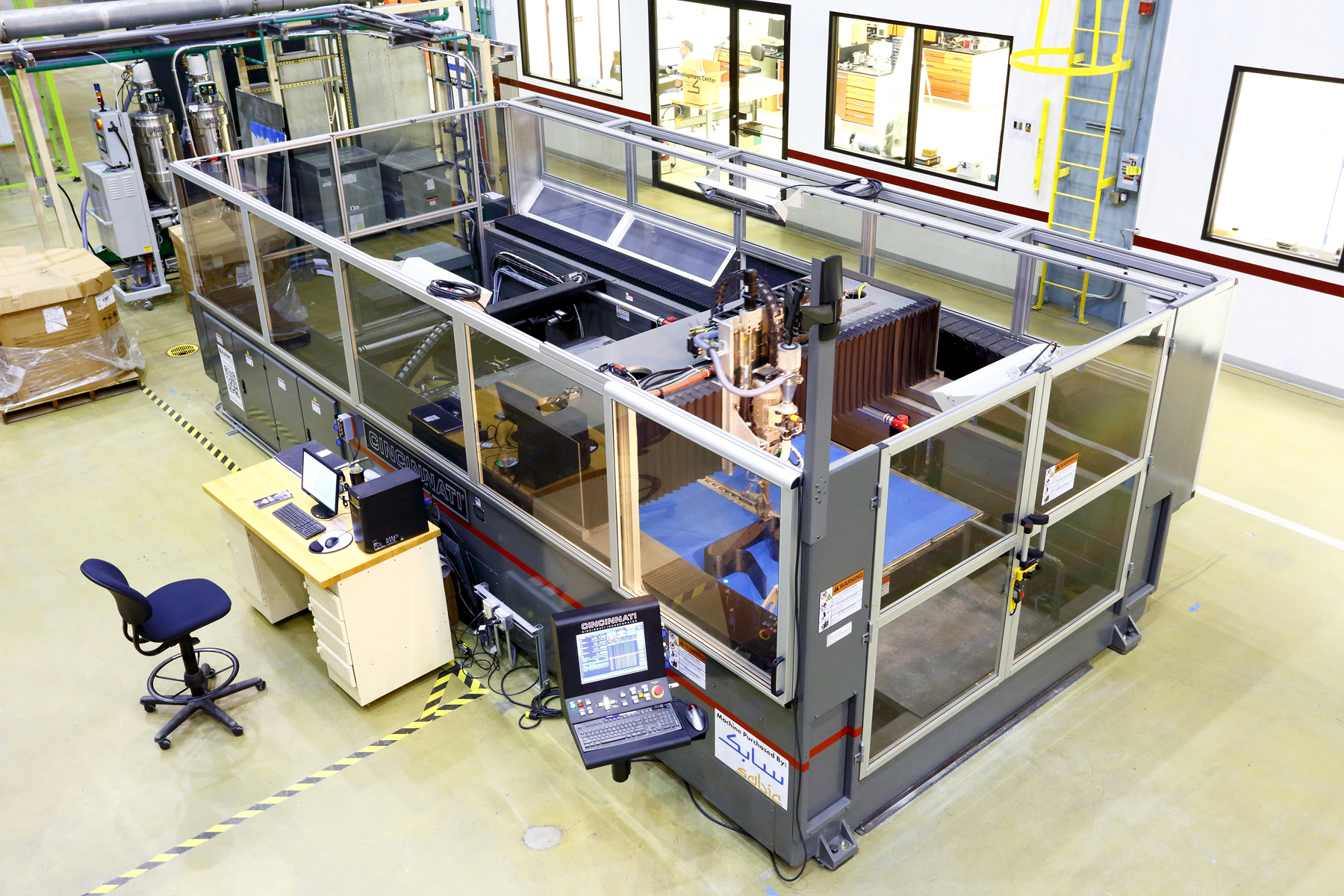
Sabic is collaborating with vehicle manufacturer Local Motors to research the feasibility of recycling scrap thermoplastic parts and shavings from plastics 3D printing.
Currently, no established value chain exists for reclaiming post-production LFAM parts and scrap, according to Sabic. Reused large format additive manufacturing (LFAM) materials can also suffer from degradation from multiple heat cycles such as grinding, re-pelletizing and re-compounding. Each step adds to the cumulative heat history, which can break down the polymer chains and reduce fiber length and affect performance.
The companies analyzed the printability and mechanical properties of Sabic’s LNP Thermocomp reinforced compound after being 3D printed, reclaimed, ground and reprocessed into pellet form. In order to assess printability, six material samples of the compound were prepared, containing 0, 15, 25, 50, 75 and 100% reprocessed content respectively. These samples were monitored for changes in throughput and melt flow rate on a big area additive manufacturing (BAAM) machine from equipment supplier Cincinnati, Inc. Each sample was used to print a single-wall hexagon, and, according to Sabic, all the samples printed well, with a smooth, shiny surface and straight, even layers that demonstrated no issues with material flow.
To evaluate mechanical properties, specimens were cut from each hexagonal printed part and tested for tensile properties using Test Method D638 as a guideline, and for flexural modulus using a three-point bend test following a modified ASTM D-790 test method. Results showed excellent tensile properties in the part samples containing smaller percentages of regrind and only incremental declines in the samples that included larger percentages of regrind, the company said. The 100% regrind sample experienced just a 20% reduction in tensile properties in the X direction and a 15% reduction in the Z direction. For flexural properties, the same gradual trend occurred, with flexural modulus declining by just 14% in the X direction and 12% in the Z direction for the sample containing 100% regrind.
According to Sabic, the study determined that material from post-production parts and scrap could potentially be reused in LFAM or other processes, such as injection molding or extrusion, at amounts up to 100%. While tensile and flexural testing showed decreasing mechanical strength as the percentage of regrind increased, this finding is typical of regrind used in other processes such as injection molding and extrusion, the company said.
‘As adoption of large format additive manufacturing accelerates, it is essential to find sustainable alternatives to landfilling large, printed parts,’ said Walter Thompson, senior applications development engineer, Sabic.
‘Building next-generation vehicles means embracing next-generation manufacturing processes,’ added Johnny Scotello, director of technical product at Local Motors. ‘We’re proud to work with Sabic in making large format additive manufacturing more sustainable. Bringing value to scrap or end-of-life parts is a difficult challenge, but the results of this study point to a bright future for sustainable, circular products.’
This story uses material from Sabic, with editorial changes made by Materials Today. The views expressed in this article do not necessarily represent those of Elsevier.




